Sulla Fotografia (FINALMENTE UNA SPIEGAZIONE?)
- Jörg M. Colberg
- Sep 15, 2017
- 10 min read

Traduzione personale dell'articolo apparso sul sito:
Un saggio di due parti di Darren Campion sul testo “Sulla Fotografia” di Susan Sontag mi ha fatto riflettere. Non sono nemmeno sicuro che Sontag scriva davvero sulla fotografia. È vero che in senso letterale i diversi saggi discutono della fotografia. Ma una volta che si inizia a comprendere le conclusioni di Sontag (e a ignorare tutte le contraddizioni e le carenze), la fotografia emerge poco dalla piñata (riferimento al gioco della pignatta) per la scrittrice: la sostanza di Sontag non è tanto la fotografia, ma la nostra cultura. La mia discussione non è tanto sulla critica di Sontag della nostra cultura. Invece, è la proiezione di quello che per me si legge distintamente come conclusioni pre-determinate circa la fotografia. Non impari quello che ti serve a farla, e finisci con alcune idee piuttosto strane della tua piñata.
Voglio dire cos’è comunque la fotografia? Di cosa si parla quando si parla di fotografia? Quando i fotogiornalisti parlano di fotografia, parlano esattamente dello stesso argomento a cui si riferiscono i fotografi di pubblicità? Quando le persone che pubblicano su Instagram parlano di fotografia, parlano della stessa cosa di quella dei curatori museali? Quando io parlo di fotografia (come in questo caso), tu lettore, hai la stessa percezione nella tua testa? Non ne sono sicuro. Sono abbastanza sicuro che l'idea di Sontag sia molto diversa dalla mia. È vero, tutta la fotografia si concentra sulle fotografie. Ma non c'è nemmeno accordo su ciò che è esattamente una fotografia, per non parlare di quello che fanno o come lo fanno.
Per me è proprio questo il fatto: e cioè che le fotografie possono significare tante cose diverse che rendono proprio per questo la cosa interessante. Ma per fare piena giustizia a ciò che la fotografia è, o come essa funziona, o piuttosto come noi operiamo, dobbiamo sempre non solo riconoscere i contesti che stiamo occupando, ma anche le nostre aspettative. Se non lo facciamo, affronteremo vari tipi di problemi comuni, vale a dire che i nostri argomenti hanno poco senso per gli altri (anche se c'è un grosso avviso nella qualsiasi piccola bolla in cui operiamo).
Se, ad esempio, i fotogiornalisti discutono i tipi di manipolazioni che dovrebbero essere consentiti per le fotografie, questi argomenti potrebbero avere un senso perfetto per quel particolare contesto. Ma per un fotografo pubblicitario, non permettere l'uso gratuito di Photoshop deve sembrare un approccio abbastanza assurdo: chi vorrebbe pubblicizzare un prodotto con immagini che sembrano orribili? Di fronte ad esempio ad un forte contrasto in bianco e nero e orizzonti storti del fotogiornalismo?
Tu non puoi manipolare le tue immagini, ma puoi farlo? Questo non significa che un approccio sia necessariamente migliore dell'altro. Non lo è. Ogni approccio funziona perfettamente nel proprio contesto - anche se ogni approccio potrebbe essere soggetto a discussioni spesso necessarie, in particolare perché i contesti e le aspettative possono essere diversi.
D’altra parte, si noti che per contesto si intende due aspetti allo stesso tempo. In primo luogo c'è il contesto più ampio in cui viene utilizzata una fotografia (ad esempio la notizia). E in secondo luogo, c'è il particolare contesto specifico (ad esempio una discussione sull'assistenza sanitaria o qualunque altro argomento). Entrambi i tipi di contesto generico e specifico sono dotati di un proprio insieme di aspettative, di solito coincidono, ma non sempre, e spesso è più importante l’ultimo.
Di conseguenza, quando si parla di fotografia, di solito parliamo di fotografia in un contesto specifico. E dobbiamo riconoscere che se non lo facessimo ci metteremmo facilmente in difficoltà. Nella "vita reale" sembriamo abbastanza flessibili e abili nel trattare la fotografia. Solo per dare un esempio, poco fa ero nella fila di un supermercato e c'era una madre con suo figlio relativamente giovane proprio dietro di me. Il ragazzo ha indicato una rivista in vendita nell’edicola. Non ho sentito quello che ha detto. Ma ho sentito molto chiaramente che sua madre gli ha detto che non doveva necessariamente credere alle copertine delle riviste, visto che le persone ritratte su di esse erano “photoshoppate” per renderle attraenti. Ecco una lezione di visual literacy all’edicola del supermercato.
L'importanza del contesto (e delle aspettative collegate) diventa facilmente evidente quando sei di fronte a una fotografia in maniera che il contesto non sia sufficientemente chiaro o quando guardi una fotografia che sembra violare ciò che ti aspetti da un particolare contesto. L'uso da parte di Benetton di una fotografia di David Kirby (la pubblicità del 1992 sull’AIDS) è un buon esempio di una fotografia scattata in un contesto e messo in un altro. Un altro esempio sarebbe il soldato talebano morto di Luc Delahaye. Se le fotografie fossero veramente assolute come spesso descritte, scattare una foto fuori da un contesto e portarla in un altro non avrebbe importanza. Ma non è così che funziona. Maggiore è la differenza tra due contesti (e le loro aspettative associate), tanto più un fruitore potrebbe rimanere sconvolto.
Infatti, le fotografie non sono assolute. In genere associamo un contesto a ogni fotografia (o almeno tentiamo) in base a forma e contenuto. Un'immagine in bianco e nero granuloso con una linea orizzontale curva sembra un quadro fotogiornalismo, perché non vediamo queste immagini in pubblicità. Abbiamo alcune aspettative di quali immagini appariranno in un dato contesto e li applicheremo (per inciso questo non significa che tali aspettative non possano essere cambiate): questa immagine sembra fuori da questo particolare contesto, quindi vado ad indagare cos’è.
Ho insegnato visual literacy agli studenti qualche anno fa e un esercizio consisteva nel mostrare fotografie agli studenti senza informazioni aggiuntive (diverso dal contesto più ampio, ad esempio "notizie"). Il compito degli studenti era quello di descrivere le immagini e dirmi cosa significavano per loro (o cosa avrebbero potuto significare). Gli esempi più emozionanti erano le fotografie in cui gli studenti letteralmente non avevano idea di quello che stavano guardando. Un esempio che ricordo chiaramente era una fotografia a colori del giorno in cui Pearl Harbor fu attaccato. Nessuno studente era in grado di individuare ciò che era stato loro mostrato. Erano tutti d’accordo si trattava di una fotografia che mostrava una fuoriuscita di petrolio da qualche parte: molta acqua, un fumo molto spesso vicino a una struttura navale e una fotografia a colori.
L’obiettivo della visual literacy - e lo scopo di questo insegnamento - è quello di interrogare questo tipo di meccanismi, dove attribuiamo contesti e significati alle immagini, in base a ciò che mostrano e come lo mostrano. Più puoi farlo, più puoi capire il mondo delle immagini che ti circondano.
Tornando alla domanda iniziale più generale, non so quali siano le fotografie nel senso più assoluto. Esse tendono ad essere incredibilmente malleabili quando apponiamo un tipo di aspettative, dato un contesto e quando poi proiettiamo le nostre idee. Questo è ciò che rende la fotografia così grande, così vivace: ci sono così tanti contesti diversi, tante diverse aspettative e idee.
Di conseguenza, quando guardiamo le fotografie non esaminiamo necessariamente soggetti assoluti che ci parlano del mondo. Al contrario, quando guardiamo una fotografia, sappiamo che qualcuno sta indicando qualcosa (che potrebbe essere o non essere nell'immagine) e la fotografia è la connessione che possiamo fare partecipando all'esperienza di condividere un momento. Quell’esperienza può essere molto specifica, ad esempio quando il medico ti mostra un osso rotto su una fotografia a raggi X oppure può essere incredibilmente vaga, ad esempio quando sei davanti a una grande immagine astratta.
Proiettate le vostre idee sulle fotografie a vostro rischio. Con ogni probabilità, si perderanno alcuni aspetti di ciò che questo bel medium incredibile può rendere.
Jörg M. Colberg
A two-part essay about Susan Sontag (part 1, part 2) by Darren Campion had me think about my problem with On Photography. I’m not even sure that Sontag really writes about photography. It’s true, in the most obvious sense the various essays discuss photography. But once you start digesting Sontag’s conclusions (and ignore all the various contradictions and shortcomings), photography emerges as little more than a piñata for this particular writer: Sontag’s beef is not so much with photography, it’s with our culture. My problem here is not so much Sontag’s critique of our culture. Instead, it is the projection of what to me read like pretty clearly pre-determined conclusions onto photography. You don’t learn all that much by doing it, and you end up with some pretty strange ideas of your piñata.
I mean what is photography anyway? What do we talk about when we talk about photography? When photojournalists talk about photography, do they talk about the exact same entity as advertizing photographers? When people who post on Instagram talk about photography, do they talk about the same entity as museum curators? When I talk about photography (as I do here), do you, the reader, have the same entity in your head? I’m not sure. I’m pretty sure that Sontag’s idea of photography is very different than mine. It’s true, all photography focuses on photographs. But there isn’t even agreement concerning what exactly a photograph is, let alone what they do or how they do it.
For me, it is exactly that fact, namely that photographs can mean so many different things that makes this interesting. But to do full justice to what photography is, or how it operates, or rather how we operate it, we need to always not only acknowledge the contexts we’re dealing with but also our own expectations. If we don’t do that, then we’ll run into the kinds of common problems, namely that our arguments make little sense for other people (while there’s ample nodding in whatever little bubble we operate in).
If, for example, photojournalists discuss the types of manipulations that should be allowed for photographs, those arguments might make perfect sense in that particular context. But for an advertizing photographer, not allowing the gratuitous use of Photoshop must sound like a pretty absurd approach: who would advertize a product with shitty looking pictures? And what’s with all the strange high-contrast black and white and the crooked horizons in photojournalism? You can’t manipulate your pictures, but you can do that? This is not to say that one approach is necessarily better than the other. It’s not. Each approach works perfectly well within its own context — even though each approach might also be subject to often necessary discussions, in particular since contexts and expectations can be fluid.
As an aside, please note that context here means two aspects at the same time. There is, first, the larger context a photograph is being used in (for example the news). And second, there is the particular specific context (let’s say the discussion about healthcare or whatever else). Both types of context come with their own set of expectations, but the former usually — but not always — are more important than the latter.
Consequently, when we talk about photography we usually talk about photography given a specific context. And we need to acknowledge that, because not doing that easily lands us in trouble. Thing is, in “real life” we appear to be quite flexible and adept at dealing with photography. Just to give one example, a little while ago I was in the check-out line of a supermarket, and there was a mother with her relatively young child right behind me. The boy pointed at one of the magazines in the impulse-buy racks. I didn’t hear what he said. But I heard very clearly how his mother told him that he shouldn’t necessarily believe the covers of the magazines, given the people on them were Photoshoped to look attractive. What do you know, a visual-literacy lesson at the supermarket check-out.
The importance of context (and attached expectations) becomes easily obvious once you’re exposed to a photograph in such a way that the context isn’t clear, or when you encounter a photograph that seems to violate what you expect from a particular context. Benetton’s use of a photograph of David Kirby is a good example of a photograph taken out of one context and put into another. Another example would be Luc Delahaye’s dead Taliban soldier. If photographs really were the kinds of absolute entities as which they are often described, taking a picture out of one context and bringing it into another one would not to matter. But that’s not how this works. The larger the differences between two contexts (and their associated expectations), the more a viewer might be rattled.
In fact, photographs are no absolute entities. Typically, we associate a context with every photograph (or at least attempt to), based on form and context. A grainy black and white picture with a crooked horizon line looks like a photojournalistic picture, because we don’t see such pictures in advertizing. We have certain expectations of what pictures look like, given a context, and we’ll apply them (btw, this doesn’t mean such expectations cannot be changed): this picture looks like it’s out of this particular context, so I’m going to assume it is.
I taught a class on visual literacy a few years ago, which consisted of showing students photographs without any additional information (other than the broader context, such as “news”). The students’ task was to describe the pictures and to tell me what they meant (or might mean). The most exciting examples were photographs where students literally had no idea what they were looking at. One example I clearly remember was a colour photograph from the day Pearl Harbor was attacked. Not a single student was able to determine what it showed. The consensus was that it would be a photograph showing an oil spill somewhere: a lot of water, some very thick smoke near a naval structure, and a colour photograph.
The key to visual literacy — and the goal of the class — is to interrogate these kinds of mechanisms, where we attach contexts and meanings to pictures, based on what they show and how they show it. The more you can do that, the more you can understand the world of images that surround you.
Coming back to the larger question, I don’t know what photographs are in a more absolute sense. They tend to be these incredibly malleable entities that we attach all kinds of expectations to, given a context, and that we then project our ideas onto. That’s what makes photography so great, so lively: there are so many different contexts, so many different expectations and ideas.
Consequently, when we look at photographs we don’t necessarily look at absolute entities that tell us about the world. Instead, when we look at a photograph we know someone is pointing at something (that might or might not be in the picture), and the connection that we can make by participating, the experience of sharing a moment — that is photography. That experience can be very specific — such as when your doctor shows you a broken bone on an X-ray photograph, and it can be incredibly vague — such as when you stand in front of a large abstract picture.
Project your own ideologies onto photographs at your own risk. In all likelihood, you’re going to miss at least some aspects of what this pretty amazing medium can do.
Jörg M. Colberg



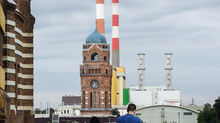




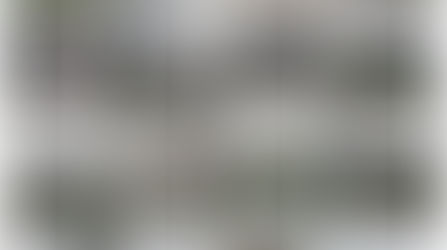










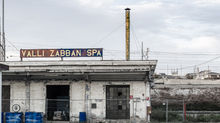
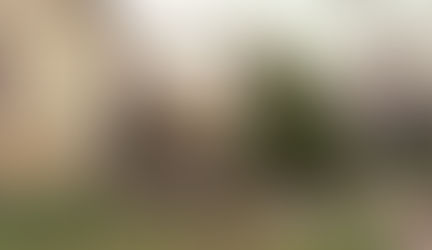







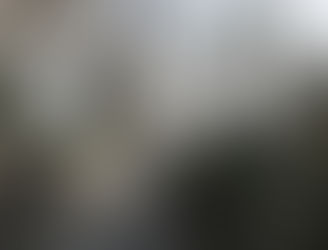
















Comments